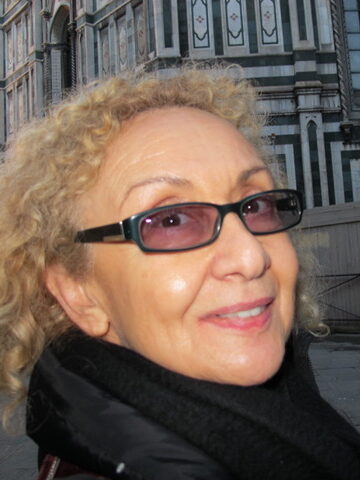AiOP STORY – New York City, September 2022
By Roberta Degnore
As a writer I’ve always been a little jealous of my visual artist friends. To visit them in their studios, see the work right there, touch it (maybe), and talk about it because it was so present would drive our interactions. By contrast, try inviting a friend to “read my screenplay” and watch them head for the door.
Art in Odd Places (AiOP) was a feast for me. In the past I’ve focused on “static” art (for want of a better descriptor). I studied people’s behaviors to New York’s sculptures and murals: Did the work draw people to them, or not? What struck me, though, was how people I interviewed would first ask, “Are you the artist?” Indeed, where were the artists?
Art in Odd Places brings the artists to us. What a rarity to interact with the creators, not only their work! AiOP is a unique forum—anywhere. In New York City it was splayed across 14th Street whose roiling freedom from gallery or museum sterility is a unique setting. I, and everyone from the Hudson to Avenue A, could talk to the artists. It was a treat to have artists and audience alike who seemed so freed and comfortable. Maybe it was because of the bus fumes, taxi horns, and press of passersby who were either interested in the art, or not—involved instead in their own silence, songs, or existential screeds. It is New York after all.
Talking with the artists was gold. Geraldo Zamproni’s “No Meio do Caminho” – Midway is an example of that gold. We had a precious communication about his work of stunning inflatable faux rocks. It was exquisite because neither of us spoke the other’s language. Still, it made an unforgettable interaction for me—as well as did his work.
I needed to hear nothing of the words, nothing more than the ardor of his hand thrown to his chest to understand that the words he was saying meant: “this is everything to me.”
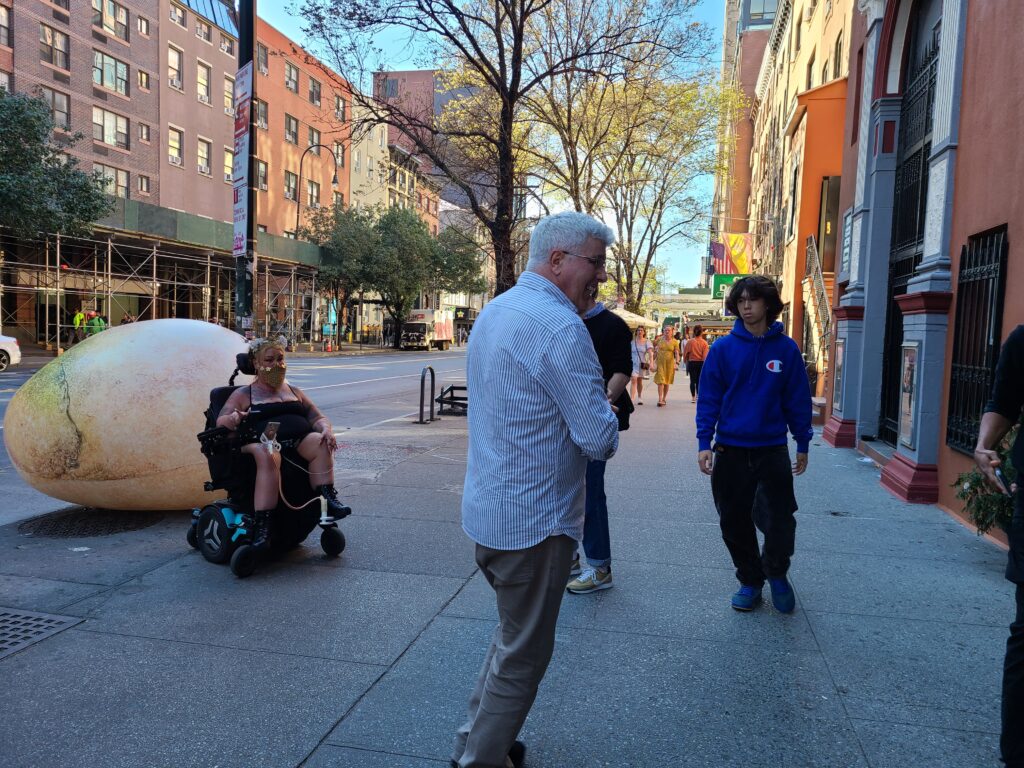
(Geraldo Zamproni, No Meio do Caminho – Midway)
In another way of communicating, the gender transformation embodied so kinetically by AnimaeNoctis – Silvia Marcantoni Taddei & Massimo Sannelli, was disseminated in their printed handout. But without their having read anything I heard an energetic passerby say approvingly to them (about their gender transformation and the grim reality of a bride and groom’s lives): “There’s nothing subtle about this!” It was said with an admiring smile and a wink.
People understood it; they got it; they appreciated it. So did I, with a minor language barrier. Being with these two artists and seeing their interaction with each other, I felt the gentleness in them despite their marriage-critical performative statement. Seamlessly, the audience and I understood the work because the feeling from each of these artists for each other came through as creators and equals.

(AnimaeNoctis (Silvia Marcantoni Taddei & Massimo Sannelli)
AiOP is an arena for the courageous. Artists expose themselves in their work and they are present to take the weight of reactions—although I never observed a negative response. In fact, Poets Of Course : Armchair Salon was given a gift for their searing poetry.
I had stopped to sit and hear a reading of their Collective riff on a Pablo Neruda poem, The Dictators. It was riveting, moving—especially in these times. A man in a well-tailored suit had stood and listened as well. At the end of the reading, he approached one of the group and he offered something small from his hand.
I couldn’t see what it was as Collective’s members pinned something to a young woman’s jacket. It was a United Nations pin that the man had taken from his own lapel. . . I found emotion hard to hold back. Even now.
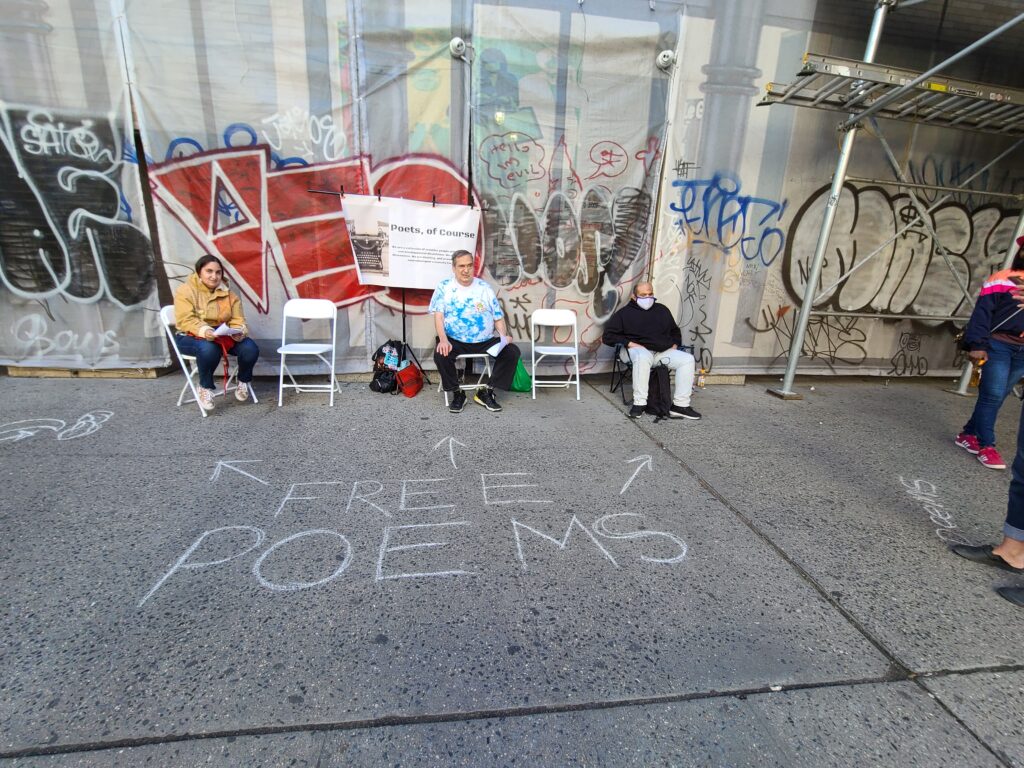
(Poets Of Course, Armchair Salon)
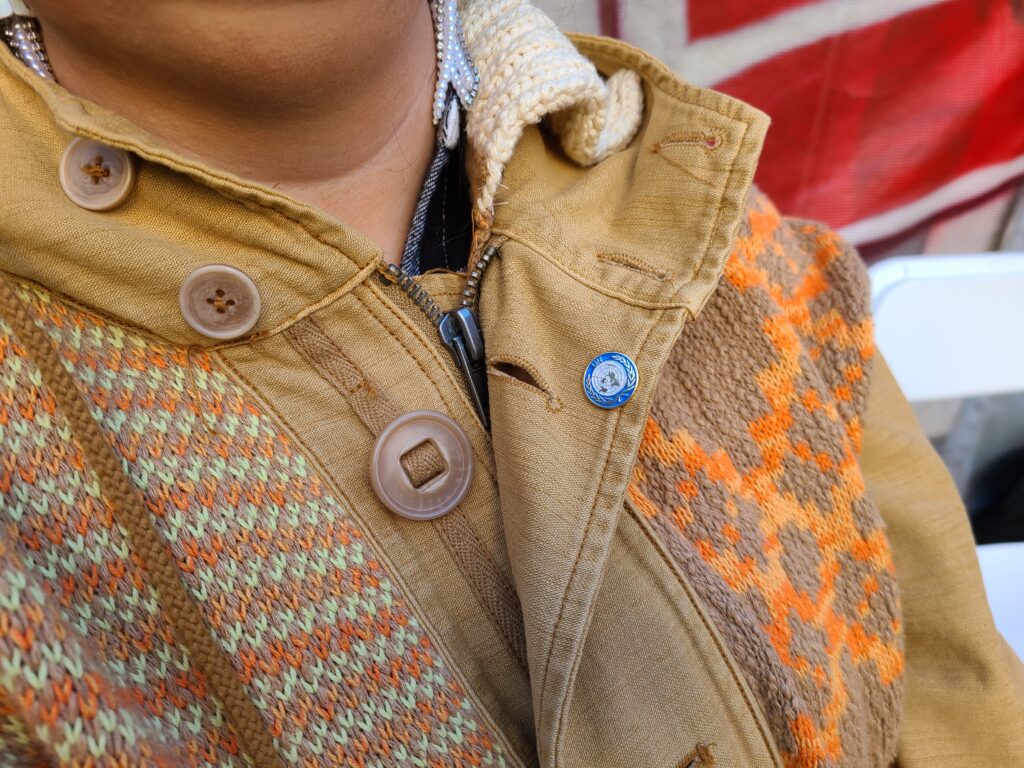
(Poets Of Course, Armchair Salon)
The understanding and gentle responsiveness of people was shown, too, to the women of 3rd House : Lights Upon the Shadow. Oh-Kyung Jang and Deena Spaner dress/undress and move sinuously and beautifully in a statement of “giving voice to an individual’s identity that has been silenced.” Their work stopped me, and I watched them.
Then I watched the passersby watch them. People showed their curiosity, and their respect for the artists. It was evident in their actions, the paths they took walking past. They explicitly gave Jang and Spaner space by walking in an arc past them, not maintaining their straight-line paths in front of the performance.
But as they passed, and for as long as they could—looking back—people never took their eyes from the work. They kept watching the artists although they did not engage them. It was a nonverbal but strong statement to an evocative piece.
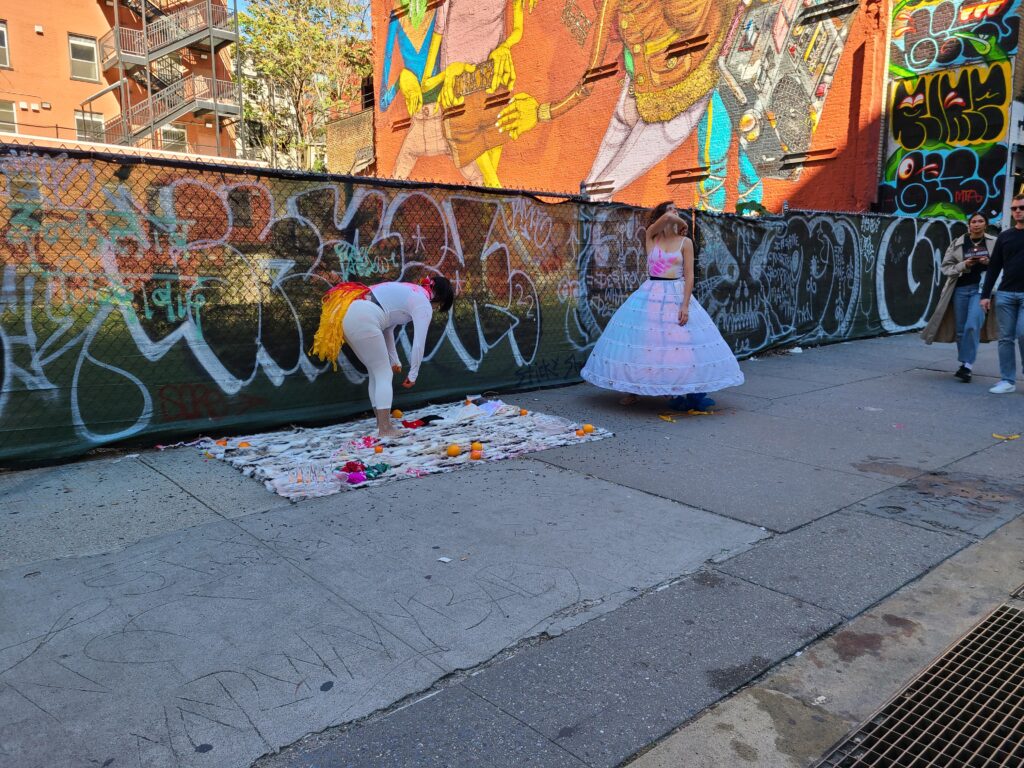
(3rd House (Oh-Kyung Jang and Deena Spaner), Lights Upon the Shadow)
In a different way, Christopher Kaczmarek’s piece Carry On : The Labor of our Burdens piece drew people into talking with him. People were at ease, questioning what the work was, what the artist’s intent was. . .
And in turn the artist was open and responsive. He shared freely with people his thinking about the piece and why he had created it. A group collected around him repeatedly. They were always appreciative and ready to interact with the artist.
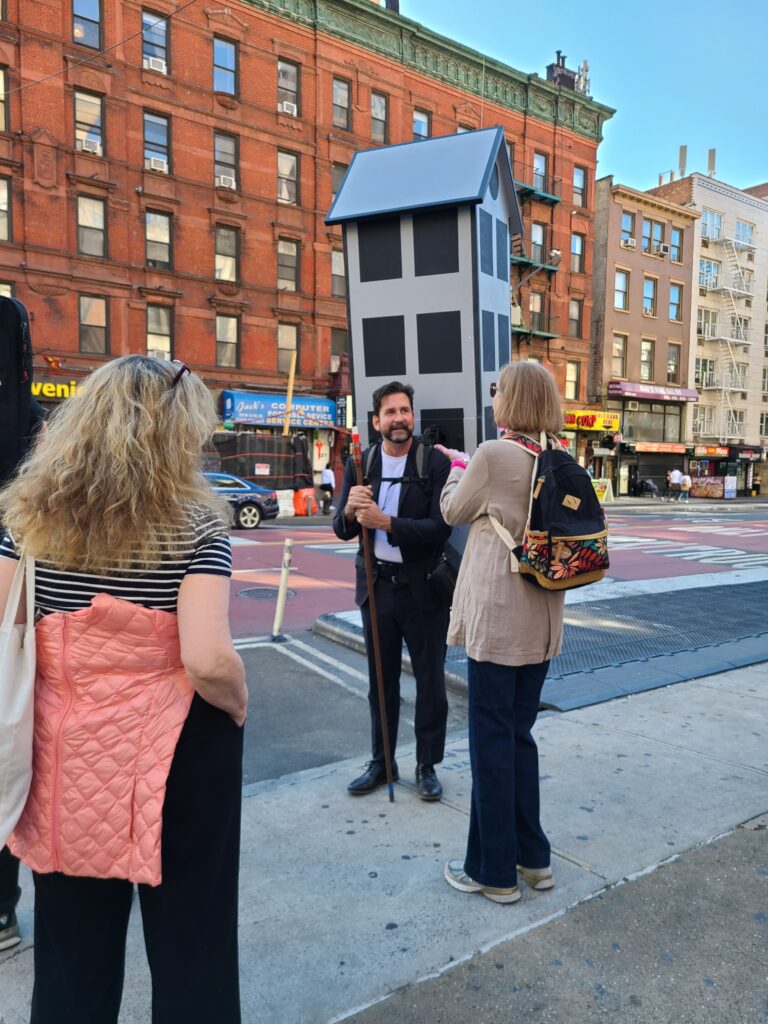
(Christopher Kaczmarek, Carry On: The Labor of our Burdens)
Vivak Sebastian’s Talisman in Situ also freed an audience to engage with him as an “urban soothsayer bestowing esoteric charms.” People were open to his work that gave people his lucky charms, and its hope of positive potential for them.
This feeling was more than felt—it seemed even augmented—by the artist’s gentle and genuine interactions. People listened, as I did, to a kind of purity in the easygoing spirit of the symbolic generosity of his work. And him.
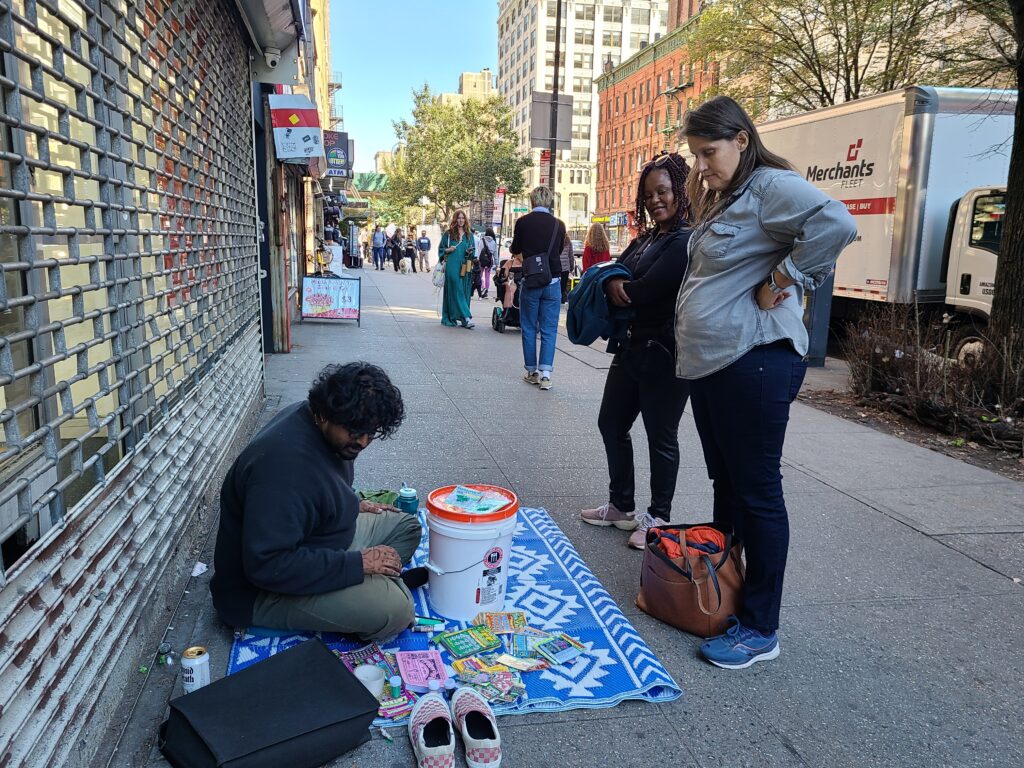
(Vivak Sebastian, Talisman in Situ)
Every artist on that sprawling stage shared their art and, of course, their souls and courage. Work displayed without the artists’ presence is different from this rare opportunity to talk to the creators, to spend time and share with them.
The artist is the work, with their work, in Art in Odd Places. The settings are indeed unusual, but the concept and the curation of AiOP allows the artists to be their work. The artists are the work.
Art in Odd Places is something special to be experienced. In whatever odd place it crops up next.
There is not enough space here to honor all the artists I saw and appreciated. Please see my Instagram reels for a visual diary of my days at Art in Odd Places. @r_degnore
And, I have a screenpl— Wait, don’t leave. . .
Roberta Degnore is an author, filmmaker, psychologist, and comfortable lone traveler. She holds degrees from UCLA in screenwriting, and from the CUNY Graduate Center in environmental psychology. Always eclectic, she avoids stagnation in life or art. Her dissertation in environmental psychology focused on the experience of art in urban settings. In it, Degnore identified an evocative-provocative continuum to understand viewer’s physical interactions with, and emotional responses to, public art. She found this “behavioral mapping” is a rich explanatory tool because it goes beyond simplistic evaluations of like/dislike for any work of art. Degnore hopes to continue to provoke thoughtful havoc.

